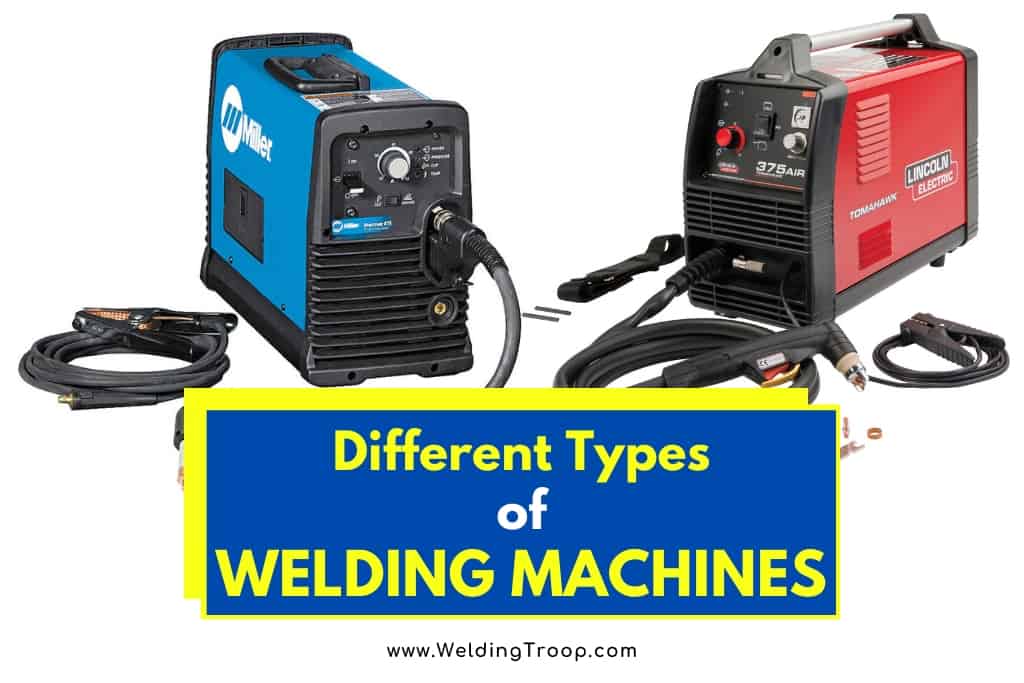When it comes to welding there is no one size fits all method. Every welding process fits a certain need or industry. They all tend to use a different machine.
How many types of welding machines are there and their uses? There are at least 10 different types of welding machines found on the market. Their uses vary with each welding process. There are machines that benefit one technique while others offer multipurpose functions.
This guide takes you through each machine. We will go over the differences and advantages of each to help you decide which machine and method fits your welding plans.
Table of Contents
Difference and Advantages in Welding Machines
When it comes to your welding machine, look at several variables. No matter your preferred or needed welding process, machines can differ in quality. Some important criteria to look for include:
- Amps available- A higher amp number represents a higher temperature while a lower amp number represents a lower temperature. This amp information helps with:
- Base material and application
- Welding process used
- Electrode type
- AC/DC Current- Some machines offer both current flows. AC benefits when a higher temperature is needed. DC is the preferred method because it has a better output than AC.
- Materials it can be used on- This one is important because you need a machine that works with materials you commonly use. This includes the type of metal you are using. Also take into consideration if the metals need to be clean or can they be rusty or painted.
- Common uses- The machine might be designed for equipment repair or construction. Is it used for advanced jobs or home use?
- Budget Friendly- Several factors could go into this category. Heavier machines with flexible options tend to be more expensive than lighter ones with basic features.
- User Friendly- A welder needs to know their industry. Different machines offer basic or advanced techniques. Look for one you can grow with or into.
- Accessories- If the machine has an external gas shield you will need tanks of that gas. Look into costs of filler for metals or needed safety gear.
- Quality- Different welding processes have varying qualities of welds. This is where you must prioritize the job needs.
- Positioning options- Not all welders offer every welding position. Welding positions include:
- Flat
- Horizontal
- Vertical
- Overhead
- Duty Cycle- The number of minutes out of 10 minutes a welder can perform continuously without shutting off or overheating. This kind of information can affect your job productivity. One tip, if you up your amps then it is possible to lower your normal duty cycle.
Related Reading: 9 Different Types of Welding Processes & Their Advantages
10 Types of Welding Machines and Their Uses
Some of these machines work well in shops or at home. These are the 10 main welding processes and machines we have found available:
| Nr. | Type of Welding Machine |
| 1 | Shielded Metal Arc Welding |
| 2 | Gas Metal Arc Welding |
| 3 | Flux-Cored Arc Welding |
| 4 | Gas-Tungsten Arc Welding |
| 5 | Energy Beam Welding |
| 6 | Plasma Transferred Arc Welding |
| 7 | Atomic Hydrogen Welding |
| 8 | Submerged Arc Welding |
| 9 | Gas Welding Oxy Acetylene |
| 10 | Multipurpose |
There are techniques included that are familiar and a few not so familiar. We wanted to cover them all for comparison purposes.
1. Shielded Metal Arc Welding (SMAW) or Stick Machine
These machines can be found with both AC and DC current capabilities. Welder uses flux covered electrode rods (sticks) in varying sizes.
Since the machine does not use an added gas shield there is no tank to carry around. The rods are covered in flux which provides protection for contaminants. Welding can take place outside or indoors.
You can use a stick welder on painted or rusted surfaces. This can be a benefit to saving time. The quality to SMAW welding is not always the best and can produce more waste since close to 20% of the rod goes unused.
When compared to other machines SMAW welders are considered budget friendly and affordable. The cost can still vary depending on what features are included with the machine.
Although it is a flexible option for both beginner and advanced welders most experts do not advice using stick welding with thin materials.
- Recommended Materials include:
- Steel
- Stainless Steel
Industries you see SMAW often used for:
- Pipeline welding
- Construction
- Heavy equipment repair
- Steel erection
- Home or Farm
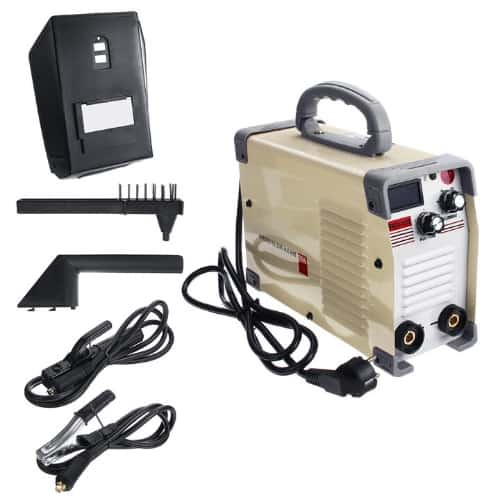
2. Gas Metal Arc Welding (GMAW) or MIG Machine
A MIG machine is known for its ease of use. Although there are some variables with this type of welder the techniques are often picked up quickly.
A MIG welder needs a clean surface to properly weld; does not do well on rusty or painted material. This process can weld material as thin as 26G.
The process uses an external gas shield meaning you will need a gas tank, usually Argon. Once you gain experience, and knowledge of how different gases react, you can use other gases to work on a variety of metals.
Recommended materials MIG can be used with:
- Aluminum
- Steel
- Carbon Steel
- Magnesium
- Copper
- Nickel
- Silicon Bronze
Industries you often find MIG in:
- Automotive
- Robotics
- Construction
- Shipyards
- Home and Farm
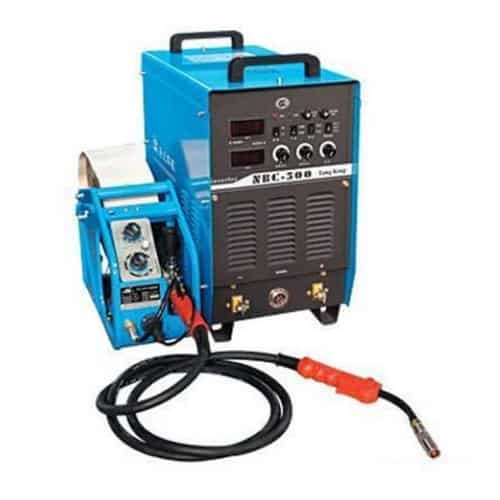
3. Flux-Cored Arc Welding (FCAW) Machine
A FCAW welder can work both indoor and outdoor thanks to a flux filled electrode. There is no need for an external gas shield. The electrode is continuously fed so there is no need to stop and restart.
A quick note: you can use an extra external gas shield with FCAW known as a dual shield. This is good for thicker, out of position welds.
These machines have less fumes and less electrode waste. They have been known to produce some smoke when in operation.
Learn More About Welding Safety – Here, you can find an article from our website about Personal Protective Equipment for Welders – PPE | List, and Requirements
Some machines can be expensive but do offer clean, quality welding. FCAW works best with thicker metals, in fact it is not recommended on any material thinner than 20G.
The FCAW is similar to the MIG process except it is considered more powerful and uses a different gas shield. Some FCAW welders can run extremely hot, reaching close to 1000 amps.
You tend to find these welders mostly run on DC but occasionally find one that has AC.
Materials recommended for FCAW are:
- Carbon Steels
- Nickel based Alloy
- Cast Iron
- Some stainless steel
Industries you find FCAW in:
- Fabrication
- Construction
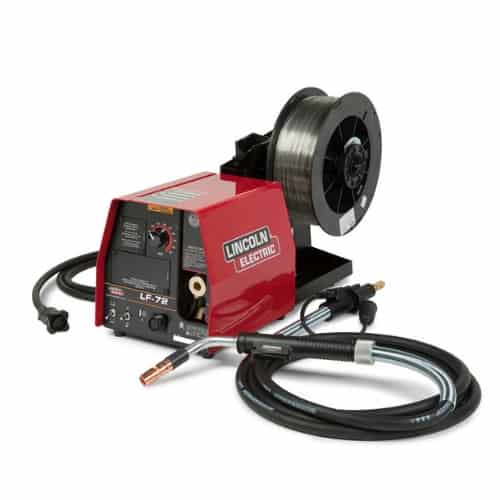
4. Gas Tungsten-Arc Welding (GTAW) or TIG Machine
This type of welding can be complicated and requires some multitasking. TIG welding requires you to hold the welding torch with one hand while feeding the filler with the other. To control amps (temperature) a welder uses a foot petal or remote to either increase or lower what is needed during the current weld.
TIG might seem intimidating at first but it does offer precise welds that work well in a variety of material. You can use TIG with a wide range of metal thicknesses.
This welder has an external gas shield that protects the molten pool from contaminants. This gas is usually Argon or an Argon/Helium mix. One of the key differences with TIG is the non-consumable tungsten electrode.
GTAW needs a clean surface with no dirt or rust. A user can always clean away the surface by sanding off paint or with proper cleaning.
Some of these machines can be costly but it depends on what you need and how much power it has. Learning how to use this welding process is known to help people earn welding certification.
Materials recommended for TIG are:
- Brass
- Copper
- Steel
- Stainless Steel
- Aluminum
- Titanium
- Magnesium
Industries you will find TIG welders:
- Piping Systems
- Aerospace
- Motorcycles
- Race car fabrication
- Jewelry Making
- Art
- Home and Farm
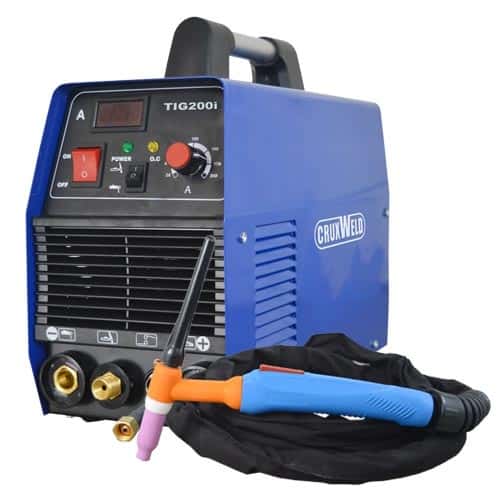
5. Energy Beam Welding (EWB) Machine
A benefit to EWB is it can weld thick metals to thin. It also joins metals of different makes.
EWB can target specific points on metals. There is little to no heat distortion in welded areas.
Since you must perform this type of welding in a vacuum because the electron beam would be absorbed by air, this type of machine is not for home use.
Industries you find EWB in include:
- Aerospace
- Automotive
- Defense
- Medical
- Oil and Gas
- Power Generation
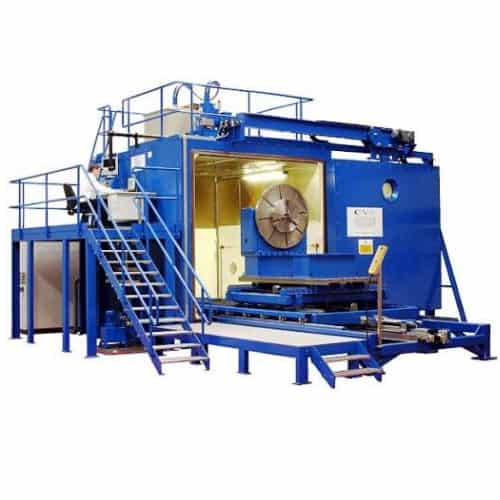
6. Plasma Transferred Arc Welding Machine (PTAW)
These are larger industrial sized machines. The welders are more expensive than the familiar ones we have discussed
A PTAW machine is a similar process to the GTAW but there is an anode surrounding the tungsten electrode. This anode constricts the arc aiming it to a laser like precision.
This anode also acts as a shield for the electrode protecting it from the powdery filler that is used for this process. The filler can be changed depending on weld.
You can find these welders used in aircraft manufacturing.
7. Atomic Hydrogen Welding (AHW) Machine
Another type of welding machine is Atomic Hydrogen Welding or AHW. Someone needs to have experience to operate this type of welder. AHW is a welding process where an electric arc forms between two tungsten electrodes with hydrogen as a gas shield. Filler must be introduced separately.
This process is not used as much as GMAW and is slowly being replaced due to cost. AHW can be used on thin and thick materials and is good for situations that require fast welding.
Materials AHW is compatible with include:
- Stainless steel
- Some special alloys
- Ferrous and non-ferrous metals
8. Submerged Arc Welding Machine
This is usually a mechanized operation where an arc is formed between a continuously fed electrode and the work base. There is not a gas shield but rather a powdered flux. The arc submerges in the flux where it is no longer seen.
This process produces a high-quality weld. The Flux can be reused which reduces waste.
Since this is an automated or semi-automated system, you do not have to have a lot of experience to use this machine. This is not a portable machine.
Materials that work well with SAW:
- Steel
- Stainless Steel
- Steel and nickel alloys
Where you might find SAW techniques:
- Manufacturing of pipeline
- Manufacturing of pressure vessels
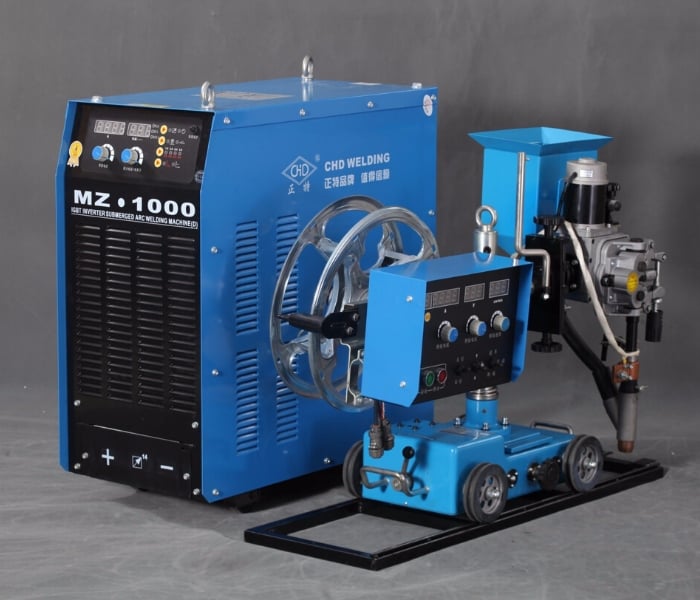
9. Gas Welding Oxy Acetylene
This is a welding technique where fuel gas is used in combination with oxygen as a heating medium. The main element of this weld is the flame produced at the end of the torch. This flame melts the base and possible filler to form a continuous weld.
This method is better for thinner materials and not as good on the thicker ones. A welder can effectively control their temperature and weld bead using this process.
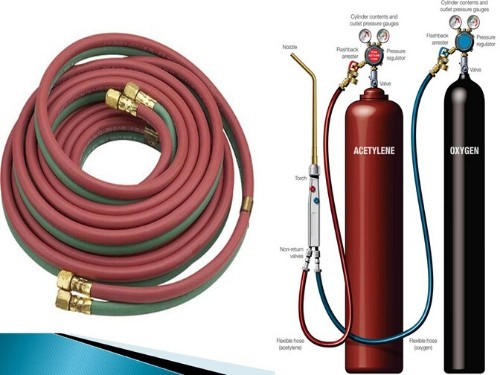
This is something that anyone can look into because it is relatively low cost and the machines are portable. There are a few components to this set-up:
- Tanks for each gas
- Pressure regulators
- Hose
- Torch handle
- Cutting tips
- Heating tips
- Welding tips
The only recommended metal to use with are iron based or ferrous.
You may not see this method as much in industry, but you can find it in:
- Field and shop work
- Automotive repair
- Plumping
- Fabricating
- Art
10. Multipurpose Welding Machines
We wanted to include this section to let you know some machines are multipurpose. This means some machines can offer varying welding processes.
If you do not want to be limited in welding choices or material uses, then look for a welding machine that can handle more than one process.
There are MIG machines that can use the FCAW. You may need to purchase additional accessories or change the settings of the welder.
We also found TIG machines that can act as Stick welders. This is just a matter of adjusting the settings.
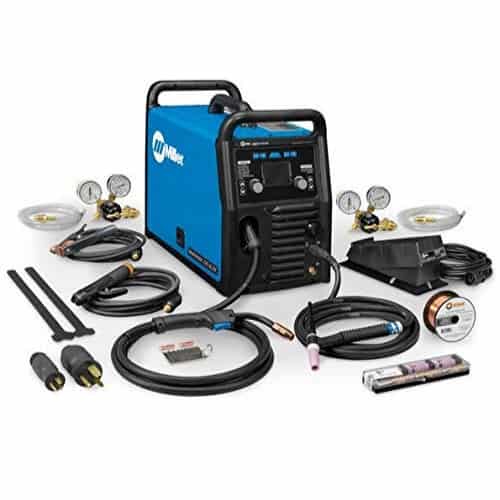
Other Welding Tools You Will Need
When it comes to welding you are going to need some additional tools to help complete your projects. A welder must think about extra tools or gear needed:
- Extra filler (sticks, wire)
- Angle Grinder
- Wire Brushes
- Slag hammer
- C-Clamps
- Welding Magnets
- Ball peen hammer
- Tip cleaners
- Flint strikers
- Needle nose pliers
- Linesmen cutting pliers
- Cold chisels
- Flat head and Philips Screw drivers
- Round and Flat Files
- Levels and Squares
- Sheet metal gauge
This is not an exhaustive list; you may find you need other tools that fit your needs better. As you gain welding experience you will collect tools and items along the way.
Safety Gear Needed for Welding
- Leather or Mechanics gloves- There are welding gloves on the market that could suit your needs. You need a heavy glove that prevents burns from possible sparks.
- Goggles tr Safety glasses- You need to wear these any time you are performing cutting or hammering tasks. Something can easily fly back into your eyes.
- Auto darkening helmet– A tinted face shield of some sort is needed. This auto one gives you the option to keep it down the whole time, preventing you from losing your place.
- Solid boots- You just need something than keeps stray sparks from burning through.
- Leather Jacket or Apron- As you weld sparks and spatter may come off the project. You want to do what you can to protect your clothes and skin.
- Ear plugs- This can be considered optional unless your area is noisy. You need a pair that blocks out noise but does not distract you from the surroundings.
Related Reading: Personal Protective Equipment for Welders – PPE | List, and Requirements
Used Welders
Used welders tend to have a smaller price tag than newer models. This route might work for you if price is an issue or you are not sure which technique you want to try. Instead of used, look into refurbished.
Some things to look for when shopping for a used welder:
- What kind of Welding process do you need? –You need to know if you want a MIG type welder or a different process. Look into multipurpose welders for more options.
- What Voltage does it take? –This may depend on where you plan to set up. If the most your location can offer is 220V then you need a compatible machine.
- What is current Duty Cycle? –You need to know how much this has changed. A low duty cycle can affect productivity.
- What was it originally used for? – A machine used for shop repair is probably going to have wear and tear different than a machine used around the house. This could show you how much life it has left.
- Outside appearance- Look for damaged knobs or scratches and dents. If there is too much damage this could link to internal problems.
- Check for cord damage- Cord damage can come from improper storage and lots of use. It is possible to replace cords, but you must decide if it is worth the effort.
A refurbished welder is still a used machine, but the seller has replaced some parts and probably painted or improved the surface. It is a good idea to ask questions about what parts were replaced and why.
Hopefully, you can actually test the machine or have the owner show you it works.
Recommended Reading
9 Different Types of Welding Processes & Their Advantages
What To Do When Your Welder Won’t Spark? 4 Easy Steps
5 Key Advantages of Arc Welding Over Gas Welding
Here are some of my favorite tools & equipment´s
Thank you for reading this article. I hope it helps you find the most recent and accurate information for your welding project. Here are some tools that I use daily and hope you´ll also find helpful.
There are affiliate links, so if you do decide to use any of them, I´ll earn a small commission. But in all honesty, these are the exact tools that I use and recommend to everyone, even my own family. (NO CRAP)
To see all my of most up-to-date recommendations, check out this resource that I made for you!

